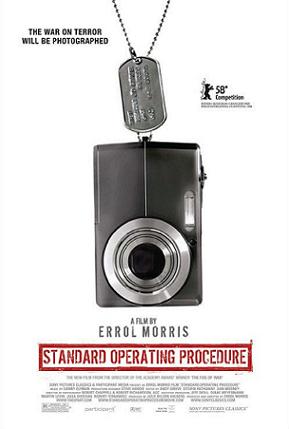
I did something I almost never do with this movie. I watched it twice in a row. Mostly because Morris’ style made it a little difficult for me to follow the first time. If you, like me, only have a vague knowledge of the major players in the Abu Ghraib story, then you’ll need to see it twice or hit that rewind button.
But maybe that is the point (you never know with a trickster like Morris.) Names and acronyms and regulations kinda fly in your face at a confusing rate – leaving you a little dizzy and hoping for order. Orders? “Just following orders” of course, is one of the major themes. We meet the people behind (and from) the Abu Ghraib photos – including her – and they kinda seem like normal people.
Standard Operating Procedure is not a 60 Minutes expose on Abu Ghraib. It is a look into the specifics of awfulness (more than once was I reminded of Hannah Arendt’s “Eichmann in Jerusalem: A Report on the Banality of Evil”) and, perhaps more importantly for our echo chamber news media culture, a discussion of the importance of the photo or video image and its contexts.
Each of the “defendants” have an opportunity to speak for themselves and, frankly, many make a good case. One guy who did a year of prison had nothing to do with the torture (excuse me, “softening up”) except for one day when he was the guy removing cuffs so someone’s hands didn’t fall off. But that was on film. Don’t let yourself be seen on film.
Most shocking was the revelation that the guy in this photo, arguably the most sickening of all the Abu Ghraib photos, was actually a “friend” to the officers before and after this shot was taken. And that the wires weren’t hooked up to anything. The jury stamped this photo as “S.O.P.” – Standard Operating Procedure, by the way.







